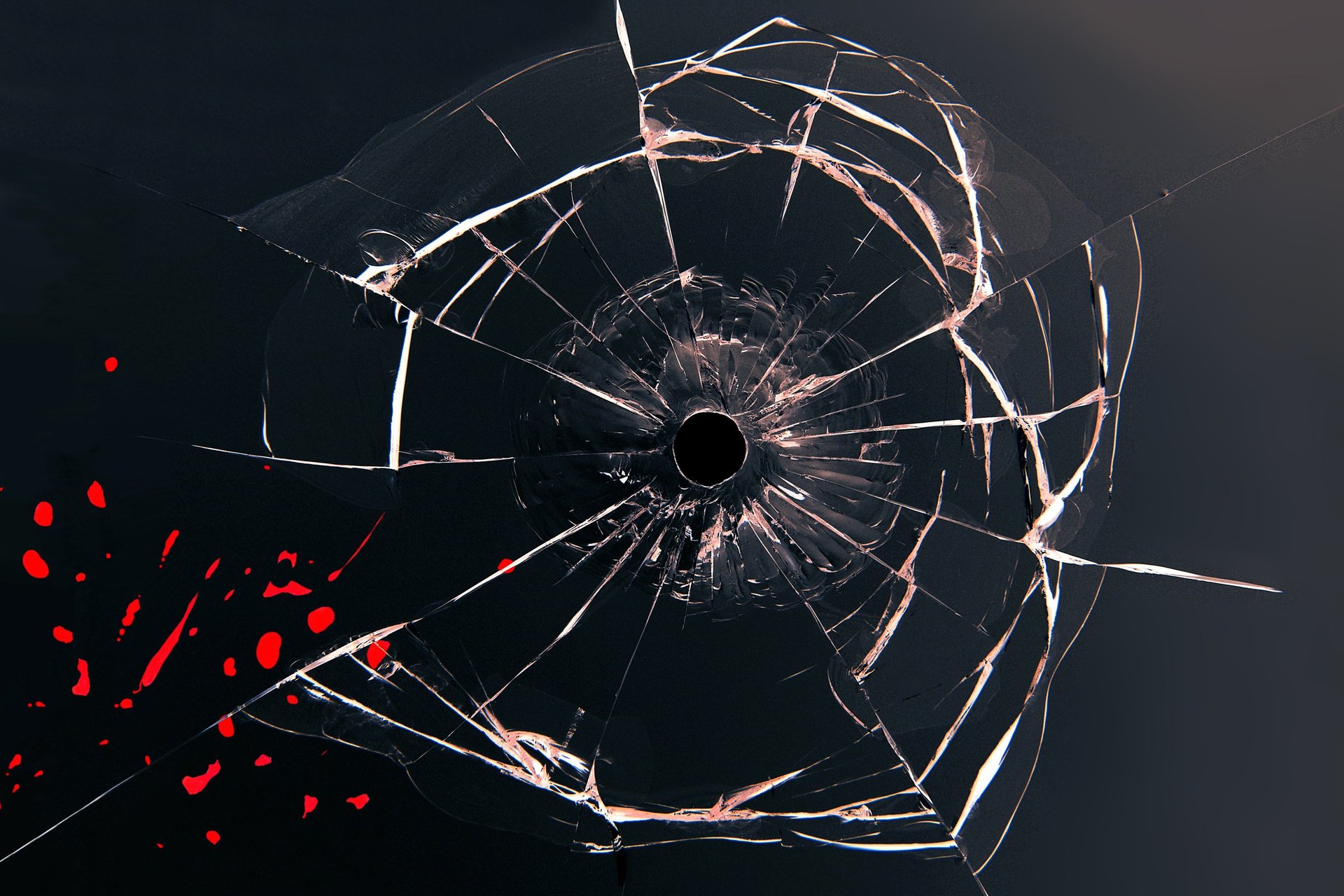
The Evolutionary History of Soviet and Russian Villains and Gangsters
Russian gangs have completed their transformation from lowly thugs to becoming part of high society. The gangs of the Soviet Union and Russia have a story full of absurdity, fantasy, and tragedy.
全文在本站的词条
Little John Khan & CathayViews (Trans. & Ed.)
6/20/202315 min read
We have previously talked about the history of the development of American gangs, where each generation was not as good as the previous one. In fact, American gangs are not particularly prominent in the history of world crime, but they have a higher exposure rate due to America's strong cultural output. On the other side of the former Cold War, the gangs of the Soviet Union and Russia have a story full of absurdity, fantasy, and tragedy.
We will mainly introduce three generations of Soviet villains.
First Generation Villains: Soviet “Thief in Laws”
Like ancient Chinese Empire, the Russian Empire was also a vast agricultural empire, which meant that there were inevitably many areas and domains that the government could not control due to limited productivity and communication capabilities. As early as the Tsarist era, there were a large number of bandits in Russia, particularly in Ukraine and Georgia, who produced various types of firearms.
As early as the reign of Empress Catherine, the bandit leader Pugachev led a massive uprising. In the later period of World War I, with the collapse of Tsarist Russia and the continuous revolutions and civil wars, there was a large power vacuum in Russia, and the White Army, bandits, and various types of rogue proletarians roamed the land. After the victory of the October Revolution, the newly established Soviet government could not spare any effort to restore order. In 1919, even Comrade Lenin himself was robbed at night in Moscow, not only losing money but also having his car stolen.
After the establishment of the Soviet Union, due to economic difficulties and a lack of law enforcement, many people even considered robbery as a part-time job, leading to many seemingly unbelievable legendary cases.
In 1923, the Soviet Union produced its first film after the establishment of the country, called "Красные дьяволята", which tells the story of a Red Army scout fighting against a bandit leader named Mahno. The actor who played Mahno in the film was named Kucherenko, a young Ukrainian actor. The director discovered during auditions that he had an extremely skilled performance when playing a bandit, using all kinds of slang. Therefore, he chose him to play the bandit leader Mahno. After the film was released, Mahno's image became popular throughout the country, but the Soviet police soon arrested the actor Kucherenko on the set. It turned out that while he was playing the bandit in the film, he was also a real bandit at night. He was able to act so well because he had actually been a henchman under Mahno. During his time as an actor, he committed 22 robberies and 11 murders, and the guns he used in the robberies were props used by the film crew. Even more outrageous, his two accomplices were the film crew's lighting technician and script supervisor. The three of them often took the opportunity of outdoor shooting to commit robberies in the local area, and the film crew provided support for the robbery gang from food and lodging expenses to tools for several months. Kucherenko could be called the first person to commit robbery at public expense.
The situation was so chaotic that it was necessary to suppress it. Therefore, after the establishment of the Soviet Union, Cheka's leading figure, Jernasinsky, who was both capable and of good character, was responsible for the task of cracking down on bandits and fighting against crime. After several years of effort by Jernasinsky, the number of bandits in the Soviet Union's territory decreased significantly.
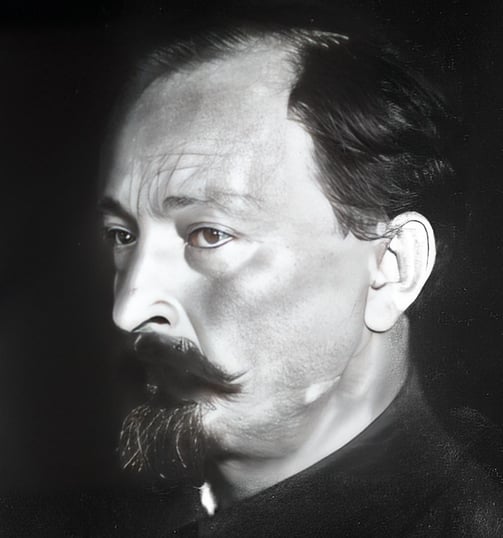

Felix Edmundovich Dzerzhinsky (1877-1926) was a Polish-Russian revolutionary who, after the October Revolution, devoted all his time and energy to the economic recovery, social relief, and maintenance of social order of the Soviet government. He was the first leader of the "Cheka" (All-Russian Extraordinary Commission for Combating Counter-Revolution and Sabotage). Although he tried his best to avoid and correct wrongful cases and overly harsh trials, the Cheka's working methods still could not avoid unjust punishments, and the Cheka and later the "State Security Committee" became increasingly inclined to strict scrutiny and harsh punishment after his death, which also put Dzerzhinsky himself in a bad light.
Image from Wikipedia. For more, see
However, Jelenski still used both soft and hard measures, mainly focusing on reforming and educating those who committed petty theft and fraud. In 1921, he issued an order stating that "the Soviet should not send workers who engage in petty theft and speculation directly to prison, but should keep them in the factory to be reformed by good people; unless they engage in terrorism and open violence, political prisoners will no longer be immediately executed." However, after Stalin came to power, he sent all former criminals in the Soviet Union to the Gulag with a single stroke of the pen. Ironically, Stalin's crackdown on criminal gangs had a bit of a "black eats black" vibe, as he gained a notorious reputation for robbing banks and hijacking trains in the Caucasus region when he was young, using his earnings to support the revolution. Due to his expertise in robbery, he was referred to by his comrades as the "chief financial officer."
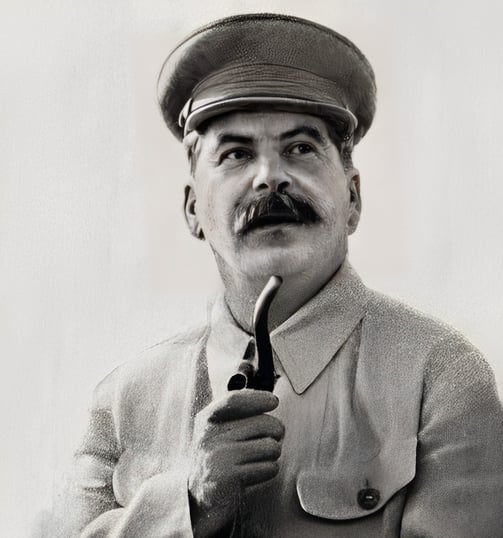

Joseph Stalin (1878-1953) was a Georgian Soviet revolutionary. He was the third (and de facto second) leader of the Soviet Union and held power for nearly thirty years (1924-1953). Stalin successfully implemented large-scale industrialization, transforming the Soviet Union from an agricultural society into a heavy industry and military power. Its industrial output was second only to that of the United States, and it led the Soviet Union to victory in the Great Patriotic War. However, his agricultural collectivization policies disrupted food production and led to the 1932 Soviet famine. In the 1930s, in addition to establishing a cult of personality, he carried out large-scale arrests, exiles, and forced labor against party, government, military leaders, ethnic minorities, and even the masses, resulting in many deaths. This period is known as the Great Purge of the Soviet Union.
Image from Wikipedia. For more, see https://en.wikipedia.org/wiki/Joseph_Stalin
The benefit of capturing all the old guns from across the country and sending them to the Gulag was that the Soviet Union's public security level improved significantly. However, it also brought drawbacks. Due to a shortage of personnel, the Gulag archipelago implemented a system where prisoners managed other prisoners. The integration of Russian mafia resources within the Gulag archipelago led to a strange ecological feedback - when a group of bad people came together, they often became even worse.
Stalin's decision at the time completely changed the history of Russian gangs, and in the Gulag Archipelago, the purest villains in the history of the world's underworld - the "thieves-in-law" - were born.
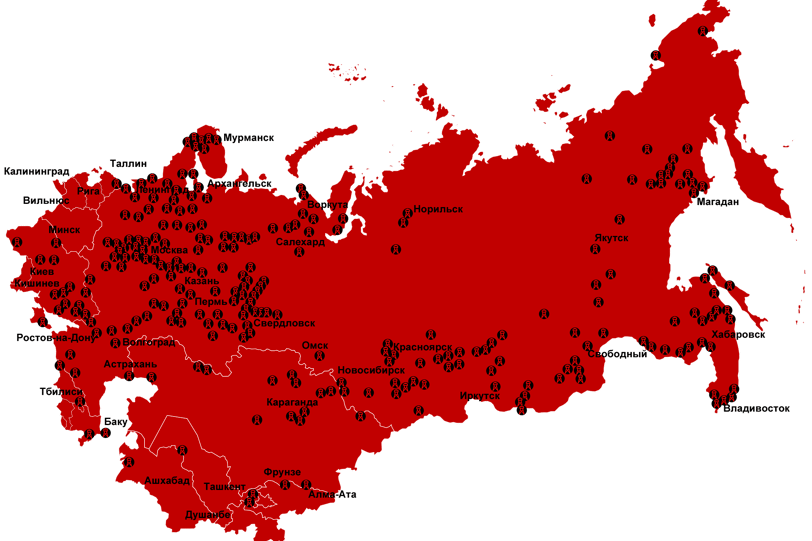

The term Gulag is a phonetic translation of ГУЛАГ, which stands for Main Administration of Corrective Labor Camps and Colonies (Главное управление лагерей). In 1973, the term Gulag began to be used in the West to refer to the Soviet system of labor camps and all forms of political persecution. The Gulag referred to the Soviet prison and labor camp network, and more broadly, represented the entire Soviet forced labor system. In addition to concentration camps and forced labor colonies, it also included special concentration camps, special prisons, forced labor without imprisonment, and in the post-Stalin era, some psychiatric hospitals as places of confinement. The Gulag was a typical embodiment of the Soviet political oppression system.
Image from Wikipedia. For more, see https://en.wikipedia.org/wiki/Gulag
“вор в законе voř v zakone”,"Thieves in Law", refers to criminals who have a certain degree of power and high status in the black market of the former Soviet Union, former Soviet states, and Russia, and are respected. Thieves in Law are the elite of organized crime in the post-Soviet world, and their status is equivalent to the "godfather" of the Italian Mafia. According to Russian news channels, there are probably over one hundred independent organized crime groups. Based on this estimate, the number of Thieves in Law worldwide is likely to be between hundreds and tens of thousands. Thieves in Law are not limited to those of Russian descent, many come from different countries, including some former Soviet or Warsaw Pact countries, such as Poland, the Czech Republic, and Bulgaria.
For more, see https://en.wikipedia.org/wiki/Thief_in_law
In the view of judicial authorities around the world, gangs are generally regarded as economic organizations, born to obtain and protect economic interests, while "Thieves in Law" groups are completely unrelated to economic interests. They commit crimes for the sake of committing crimes, and their badness is very pure, detached from any low-level interests.
In the Gulag Archipelago, a group of old-timers consisting of various backgrounds such as former Tsarist soldiers, White Army members, Cossack bandits, and Polish veterans formed a gang called the "Lawless" due to their intense hatred towards the Soviet Union. What was this organization like? I'll show you a few of their rules.
"Thieves in Law" should abandon all their relatives, including parents and siblings, and are not allowed to get married and start a family.
"Thieves in Law" are not allowed to engage in legal labor under any circumstances, and their livelihood can only rely on crime, gambling, and support from other criminals.
"Thieves in Law" must not establish any form of relationship or cooperation with those in power, and must not serve in any form for the government or the military.
"Thieves in Law" should teach young offenders criminal techniques and offer assistance to any criminals.
The most important point in these rules is that you must never cooperate with the authorities in any form, not even to help the guards to deliver the criminals’ meals. The "Thieves in Law" would rather be killed than work with the authorities. They strongly resist labor and use tattoos and other forms of markings to indicate their rank. Their principle is to speak the hardest words and take the harshest beatings.
Here's an explanation: In countries with a strong gang culture, tattoos serve as a personal resume, with rich and very serious meanings, and are not randomly chosen.
For example, in Russian gang tattoos, the four-pointed star represents never bowing down, the eagle represents the leader, the dagger represents taking lives, and the barbed wire represents committing crimes during imprisonment. In countries with a strong gang culture, one can basically tell a person's strength just by looking at their tattoos. Because they strongly dislike people who cooperate with the government, those who collaborate with the authorities in the Gulag are called "suka," which comes from the word "suka blyat"(сука, блядь) in Russian. After World War II broke out, the Soviet Union allowed Gulag prisoners to join the military to reduce their sentences. Some people chose to join the Soviet army, while the criminals maintained their principle of not contributing a soldier to the Soviet Union, even if they had to serve their entire sentence in the Gulag. After the war, the surviving "suka" returned to the Gulag to continue serving their remaining sentences, and they began a years-long "suka war" with the " Thieves in Law," who were old-timers who had been in the Gulag for ten years. The battle between the two groups established the soul of the Russian gangs and made them the most ruthless and cruel group of people in the world.
In 1980, the Soviet Union was at the peak of its power, but due to its distorted economic system, heavy industry was highly developed while light industry was not. The Soviet Union could design the world's fastest fighter jets and the most powerful nuclear submarines, but it could not sew the best clothes. However, the Olympics were a national event, and the Soviet Union could not let its athletes wear inferior sportswear to compete. Therefore, the Soviet government decided to purchase Western brand clothing. At this time, Adidas extended an olive branch and was very eager to cooperate with the Soviet Union. It was willing to sponsor Soviet athletes and hoped to open up the Soviet market. The Soviet government agreed to cooperate with Adidas, but in order to save face, they demanded that the sportswear designed by Adidas could not have its own logo. Adidas did not mind, after all, the most obvious symbol of Adidas was not its logo, but the three stripes on the side of the clothes.
In the era without stars, national team athletes were the bare Soviet top players. At the Moscow Olympics, viewers across the country saw the Adidas sportswear worn by Soviet athletes, and overnight Adidas became something that all Soviet people dreamed of. However, ordinary people at that time could never buy Adidas, and could only satisfy their eyes. But the Soviet mafia was different. A large number of athletes participating in the mafia wore Adidas, bringing the fashionable new trend into the Soviet underworld. Since then, Adidas has accompanied the Russian underworld for 40 years. Being able to wear Adidas in Soviet society represents wealth, connections, and combat effectiveness. Now, some Russians even wear Adidas at weddings, and it has become a social totem.
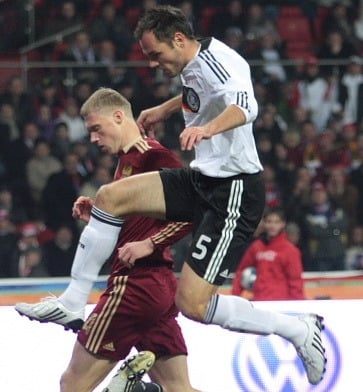

Second Generation Villains: Gangs in Soviet Black Market
Did Stalin know about the ecological degradation of the bad guys in the Gulag? Actually, he did, but he didn't care because he never intended to release these people. Unexpectedly, after Stalin's death, Khrushchev released almost all of the Gulag prisoners. While many were rightfully exonerated, a large number of evil people were also released into society. Over a million Gulag islanders were set free into Soviet society, ushering in an era of chaos and disorder.
The planned economy system of the Soviet Union provided space for illegal activities. Due to the highly regulated economy, there was a general lack of some goods in society, which could only be purchased through the black market. The inhabitants of the Gulag Islands made a fortune through buying a large number of goods by bribing corrupt officials. During the Brezhnev era, the black market gradually prospered, and the “Thieves in Law” and the gangs they led also proliferated throughout the Soviet Union, even holding several national conferences, becoming a peculiar social force in Soviet society.
However, the Soviet mafia at this time was more like an economic organization. Due to their complete reliance on the protection of officials, the Soviet mafia was extremely low-key and had very little violent behavior, let alone confrontations with the police.
Interestingly, the 1980 Moscow Olympics brought the lifelong love of Adidas to the old guns of the Soviet Union with a single gunshot. In the summer of 1980, the 22nd Summer Olympics was held in Moscow. In order to promote the Olympic spirit, the Soviet government vigorously encouraged national fitness. However, the Soviet people generally preferred physical activities such as fighting and brawling, and wrestling, judo, and combat sports became popular. These activities were simply job interviews for the mafia. The future mafia boss Ivankov was a Soviet wrestling champion. Putin's wrestling coach Usvyatsov was an old gun who had been in and out of prison for 20 years, and he had spent 10 years in prison before teaching Putin and another 10 years after. Due to the large number of athletes involved in the mafia, "sports people" became synonymous with the mafia in Russia for a period of time.
But what does this have to do with Adidas?
Third Generation Villains: Successful Figures in Post-Soviet Russia
The Moscow Olympics was a turning point, it was a comedy for the Russian mafia and a tragedy for the fate of the country. With the highly corrupt Brezhnev era, the Soviet mafia finally grew and became the first bucket of gold in the business. By the time Gorbachev came to power in 1985, the Soviet mafia was like preparing for an IPO. I have previously talked about the transformation of the American mafia, which was also due to the stupid prohibition of the 1920s. The Soviet Union did the same thing. In 1985, Gorbachev announced that the Soviet Union would suppress alcoholism, increase the price of alcohol, and limit drinking scenes. This created a market blank that was naturally filled by the mafia, which made a lot of money through private alcohol trade. In addition to private alcohol trade, the private economy opened up in the late Soviet Union also gave the mafia the opportunity to lend money. The efficiency of the Soviet mafia's lending was extremely high, with loan approval times calculated in hours, and the interest rates were reasonable and fair, compared to the Soviet banks that took several months to approve loans. Of course, if you couldn't pay back the bank's money, you would go bankrupt at most; if you couldn't pay back the mafia's money, you would have to pay with your life.
If the failed reforms of Gorbachev brought good luck to the Soviet mafia, then the dissolution of the Soviet Union in 1991 was like winning the lottery for them. Mafia is a supplement to order, and it only exists in societies that lack order. Although the Soviet mafia prospered during the Soviet era, they did not dare to confront the authorities or disrupt social order. However, the power vacuum created by the dissolution of the Soviet Union allowed the Soviet mafia to truly enter the scene and become managers of the state.
The Soviet Union disintegrated and Russia was established. Under the leadership of Yeltsin, this newly formed country was plagued by foolish decisions, turning the entire nation into a feast for gangsters.
Firstly, there was the privatization of state-owned enterprises. After the collapse of the Soviet Union, state assets were privatized, but the Soviet people did not have savings and lived in a welfare society where they did not need to save money. In the early days of the Soviet Union's collapse, the only group with money were the gangs, who collaborated with corrupt officials to embezzle a large amount of state assets, forming an oligarchic interest group.
Next is the shock therapy of opening up. After the establishment of Russia, the Yeltsin government decided to implement shock therapy, which completely flattened the country's economic stability and financial order, causing countless people to go bankrupt overnight. The government even had no power to pay the salaries of civil servants, which led many former Soviet social elites to join the underworld in search of survival. A large number of violent departments such as the Soviet military police and the constitutional order personnel entered the underworld, and Russian underworld boss Ivankov had a team of assassins composed entirely of special forces. At the same time, scientists, engineers, athletes, and professors also entered the ranks of serving the underworld. The entry of these professionals allowed the Russian underworld to form a downgraded attack on other criminal organizations in various countries, and the same thing also happened in former socialist countries in Eastern Europe. After the Eastern European upheaval, Bulgarian spy leader Pavlov became the biggest gangster in the area, integrating the entire Balkan region with extremely high professional standards, causing a sudden deterioration in the crime situation in Europe.
The most absurd thing is that the huge arsenal left behind by the Soviet Union after its collapse became a super gold mine for gangs. The enormous military depots left before and after the collapse of the Soviet Union had no owner, and all kinds of weapons were sold to the world through inside and outside connections. In Ukraine, local gangs bought large numbers of armored vehicles with money. In East Germany, the large number of rifles, armored vehicles, and rocket launchers owned by the 19 Soviet tank divisions disappeared without a trace. In 1992, the Russian military "lost" 14,000 rifles at once. In 1994, the Russian military reported "losing" 4,000 rifles and 17 anti-tank missiles, and these are just the tip of the iceberg of arms trafficking. What is even more frightening is that according to Russia's own data, there were 52 reported incidents of lost nuclear materials within the CIS from 1991 to 1994.
In October 1992, the Ukrainian Ministry of Internal Affairs arrested members of a criminal gang who were stealing nuclear materials from Chernobyl. In 1998, the Russian Federal Security Service seized 18.5 kilograms of weapons-grade plutonium from smugglers. From Africa to Latin America, Russian gangs sold Soviet military hardware all over the world. FBI agents once met with Russian gangsters in New York and asked if they could acquire a nuclear submarine. The Russians earnestly asked, "Do you want one with missiles or without?" Amidst the chaos, organized crime infiltrated every aspect of Russian society, a fact that even the international community recognized. In the 1990s, the US government defined Russia as a state controlled by organized crime.
In the mid-1990s, according to the Russian government's own estimates, 40-50% of economic activity in society had connections to organized crime. As of 1999, there were over 11,500 registered private security companies in Russia with over 800,000 employees. Assassination prices were openly advertised in Moscow, with $7,000 for an unprotected target and $15,000 for a target with bodyguards.
Law enforcement agencies not only fail to control the mafia, but also serve the mafia, acting as pawns in mafia conflicts. In the 1994 assassination of Gusinsky, there was a ridiculous scene where the Federal Security Service fought with the Presidential Security Service. The mafia has developed to the point where there is no cure. One of the two major mafia bosses in Russia, nicknamed "Papa Hassan", Usmanov, was once invited by the Russian government to serve as a negotiator during the Chechen terrorist hostage-taking incident. He could handle what the Russian government could not, and the mafia turned around to give the government protection, which shows how rampant the mafia is. These well-connected mafia bosses have also undergone personal transformations. For example, as mentioned earlier, Usmanov's photo with Putin can still be found today. After Russia successfully bid for the Sochi Winter Olympics, he invested $1 billion in Olympic projects and became one of the most important investors. However, just a year before the Sochi Winter Olympics, "Papa Hassan" was shot in the head on a Moscow street, which can be seen as karma catching up with him.
For decades, the underground world of the two poles of the Cold War has had drastically different fates. American gangs have gone from being the dominant force of the Mafia to being insignificant small-time crooks, while Russian gangs have completed their transformation from lowly thugs to becoming part of high society. This represents the difference in the destiny of the two countries: for every step the gangs take forward, the country and its people take a step back. A healthy society does not need underground organizations to supplement its order. If one day the global underworld has no more stories to tell, it will be a more wonderful legendary era than all the tales of the underworld.
Acknowledgements
The contents were originally delivered in a video by "Little John Khan"(小约翰可汗)on bilibili.com in 2020.
The original video was in Chinese. The original video has been deleted.
This version is translated by CathayViews Studio, partly assisted by ChatGPT. Some parts has been re-expressed to make it easier to read in English. Some sentences are deleted since we cannot find reliable source.
For any problem about copyrights, please contact us with email.
